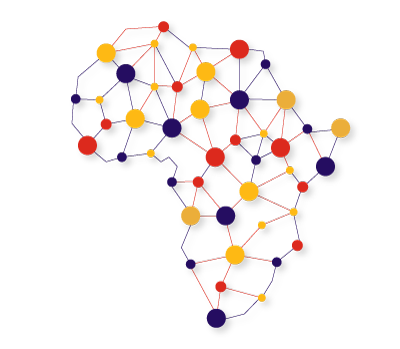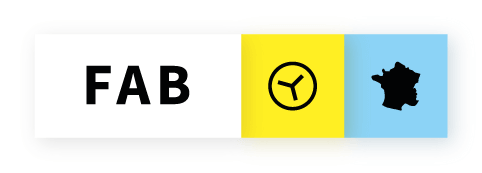Pilote Project Overview
Short Description: Overview of paratransit mapping project
Description: The Sustainable Development Goal (SDG) 11.2 calls for “safe, affordable, accessible, and sustainable transport systems for all,” in addition to other critical global targets to reduce air pollution and decarbonize the transport sector. The official indicators include the percentage of residents within a half kilometer of frequent transit, as well as related needs for access to opportunities. However, to monitor targets, plan integrated public transport and provide new services such as passenger information services, we need public transport systems data, including, at the most basic level, network and stop data. In Africa, this data is scarce. The World Bank estimates that 92% of the largest low and middle-income cities in the world do not have complete transit maps. In many of these cities, minibus systems (sometimes called paratransit because of their non-scheduled, flexible routes and stops) provide mobility for most people, yet little data exists on their operations. Further, challenges exist around collecting this data in standardized ways. The digital revolution and the spread of new forms of data and technology offer opportunities to create missing public transport data. Several efforts have emerged in African cities and elsewhere to leverage digital technology to provide open source data about stops, routes and schedules. These cases include Nairobi’s Digital Matatus, Accra Mobility, Transport for Cairo and Maputo's Mapa dos Chapas in addition to emerging projects in Addis Ababa, Dhaka, Abidjan and other cities.
Web Site : http://digitaltransport4africa.org/
Organisations interested to contribute or already contributing: Agence Francaise de Developpement, Jungle Bus, Digital Matatus Team, University of Nairobi, MIT, Transport for Cairo (TfC), World Resources Institute
Organisations using or interested to use the resource:
Contributor: HEGAZY Mohamed, KLOPP Jackie, CAVOLI Clemence, CHEVRE Antoine, LAINEZ Florian, SADIER Simon
Tags: Paratransit, Mapping Project
Category: Logiciel, Données, Communauté
Theme: Open Street Map OSM, Données ouvertes, Traces de mobilité et des données associées, Africa
Referent:
Challenge addressed: Augmenter les connaissances partagées en cartographie et usages des véhicules et réseaux de transports
Key persons:
Other common:
Communauty of interest: Communauté autour des données ouvertes, Communauté autour des traces de mobilité et des données associées, Communauté des acteurs en Afrique
Type of common: Commun
Produced in the field of OpenChallenge?
Level of developpment
Chat Space to discuss: [1]
Mailing list:
Task management link:
File management link: https://git.digitaltransport4africa.org/commons; https://git.digitaltransport4africa.org/cities
Needs:
Complement:
Next step:
SSATP Forum in Abuja
Others informations:
| Projects | Network | Pre existing data | Data collection | Data processing | Data Shared and Deliverable | Advantages | Drawbacks |
|---|---|---|---|---|---|---|---|
| Digital Matatus (Nairobi, Kenya) |
Matatu and Rail-Nairobi's Transport Network | Shapefiles of the road of Nairobi Table (.xls) of existing bus and commuter rail routes |
Identification of matatus routes, stops (name, with or without shelters...)
|
Development of a modified GTFS standard for mapping the matatus network
|
Public map (Minibus routes, stops position and name + points of interest) and free GTFS/ GIS feed online here The GTFS Feeds was incorporated to google map (users can get transit direction in Nairobi)
|
Friendly user method for data collection
|
Only estimation for Stop_Times or Frequencies
|
| Project Owner: Digital Matatus Team
Consultant: Columbia University, MIT, University of Nairobi, Groupshot |
Funding: Rockefeller Fundation
Other Stakeholders: Kenya Alliance of Resident, Kenya Institute of Public Policy and Research Analysis, ITDP, UNHabitat, Matatus drivers | ||||||
| Accra Mobility (Accra, Ghana) |
Trô-Trô Transport Network |
Register of lines per unions with Terminus | Openstreetmap contributors and students collecting GPS data (bus stop/routes) directly on OSM with OSM Trackers app.
|
OpenStreetMap tools were used to check and verify quality and completion of data Manual process to generate JSON Development of a data validator on JOSM
Schematic Map produced in Illustrator |
GTFS/ GIS Dataset and map on GitHub here OSM data on bus stops and routes
|
Data used by Transit and TransportR app
|
The GTFS Field has to be regenerated for every change
|
| Project Owner: Departement of Transport (DoT) Consultant: Concordia University, Jungle Bus & Transitec Other Stakeholders: OpenStreetMap Community |
Funding: UTP & AFD
Beneficiary: DoT | ||||||
| Transport for Cairo (Cairo, Egypt) |
Greater Cairo Region: Metro, Public bus, Paratransit bus Phase 1: New Desert Community Phase 2: Ineer-city |
GIS map of the formal bus lines, created by the World Bank digitizing paper maps | Geographic Data collection with smartphone
|
Developed set of internal tools to automate most steps of creation of a GTFS
|
Intermodal map and free GTFS/ GIS Dataset online here Anticipated release of Phase 1 for Summer 2018 |
First Open Intermodal Map | Stop_Times or Frequencies_are estimation |
| Project Owner: TfC Consultant: TfC Other Stakeholders: Digital Matatus Team |
Funding: ExpoLive Impact Grant Programme
Beneficiary: City of Cairo | ||||||
| Mapa dos Chapas (Maputo) |
Minibuses Network Public Buses lines Main urban train line |
JICA had collected data about major minibuses routes (in the context of the BRT feasibility study), but it was limited and was not used for this project | GPS mapping and fieldwork to localize minibus lines and stops |
Workshops with minibus operators to name the bus stops and confirm GPS/fieldwork data Meetings with public authorities to validate data Design and publish the schematic map (version 0) Receive and integrate feedback from users Update map (version 1 & 2) Upload data to OSM (ongoing) |
Maputo Minibuses maps and mapa dos Transportes da Cidade de Maputo | Strong interaction with local stakeholders and local authority The map has been embraced by the local authority and was renamed “Map of public transport” and includes the local authority’s official logo |
Does not include the metropolitan area No Data published |
| Project Owner: Waza, UCL, Rede Uthende (Ruth, civil Organization)
Other Stakeholders: Minibus owners, MTP, City Council, Chapas owners |
Consultant: Mapa dos Chapas,
Funding: UCL, The Kestrelman Trust, Dialogo Program (Dfid), AGIR program (Swedish Embassy), Rosa Luxemburgo Fundation Beneficiary: Maputo City Council, Transport Metropolitan Agency | ||||||
| Doula's PMUD (Douala, Cameroun) |
Taxis line network | Identification of terminal stop Using GPS Tracker (format KML) |
Taxi, average speed and influence area Bus + Taxis (fixe ligne) identification of routes, travel times, tarification, frequency... |
PMUS and Doula Transit Map (ongoing) | GPS Tracker on the bus | Focussing on bus routes | |
| Project Owner: CUD (Douala Urban Community) Consultant: Systra |
Funding: AFD, FFEM, MYC
Beneficiary: CUD | ||||||
| Mapanica (Managua) |
Transporte Urbano Colectivo de Managua y Ciudad Sandino (network of IRTRAMMA) | Incomplete and scattered information available on OpenStreetMap.org | Community workshops: Managua students and interested citizens learned about participatory mapping, collected GPS data of the bus routes and stops. Primarily the smartphone OsmTracker app has been used and the data directly uploaded to OpenStreetMap.org (in GPX format) | Community workshops: Managua students and professionals learned on advanced editing on OSM and working with GIS in general; this technical core group developed high quality data with JOSM and the pt_assistant tools. The local specialists dealt perfectly with challenges |
Open Data GTFS/GIS Dataset Online+ API
|
Contributing to provide solutions that will help future projects to do the same or similar
|
Officialisation of informal bus stop name.
Sustainability through formality and constant maintenance: Communities can power up an effort to change but continuity can be given in Managua only through the governmental institution in charge (IRTRAMMA). |
| Project Owner: Nicaraguan OSM Community Consultant: Nicaraguan OSM Community, Ninfus Design Studio |
Funding: Crowd-funding Campaign
Other Stakeholders: Municipal regulatory institute for the city's transport (ITRAMMA) | ||||||
Other languages : ![]() English -
English - ![]() Français
Français

 Français
Français English
English Italiano
Italiano